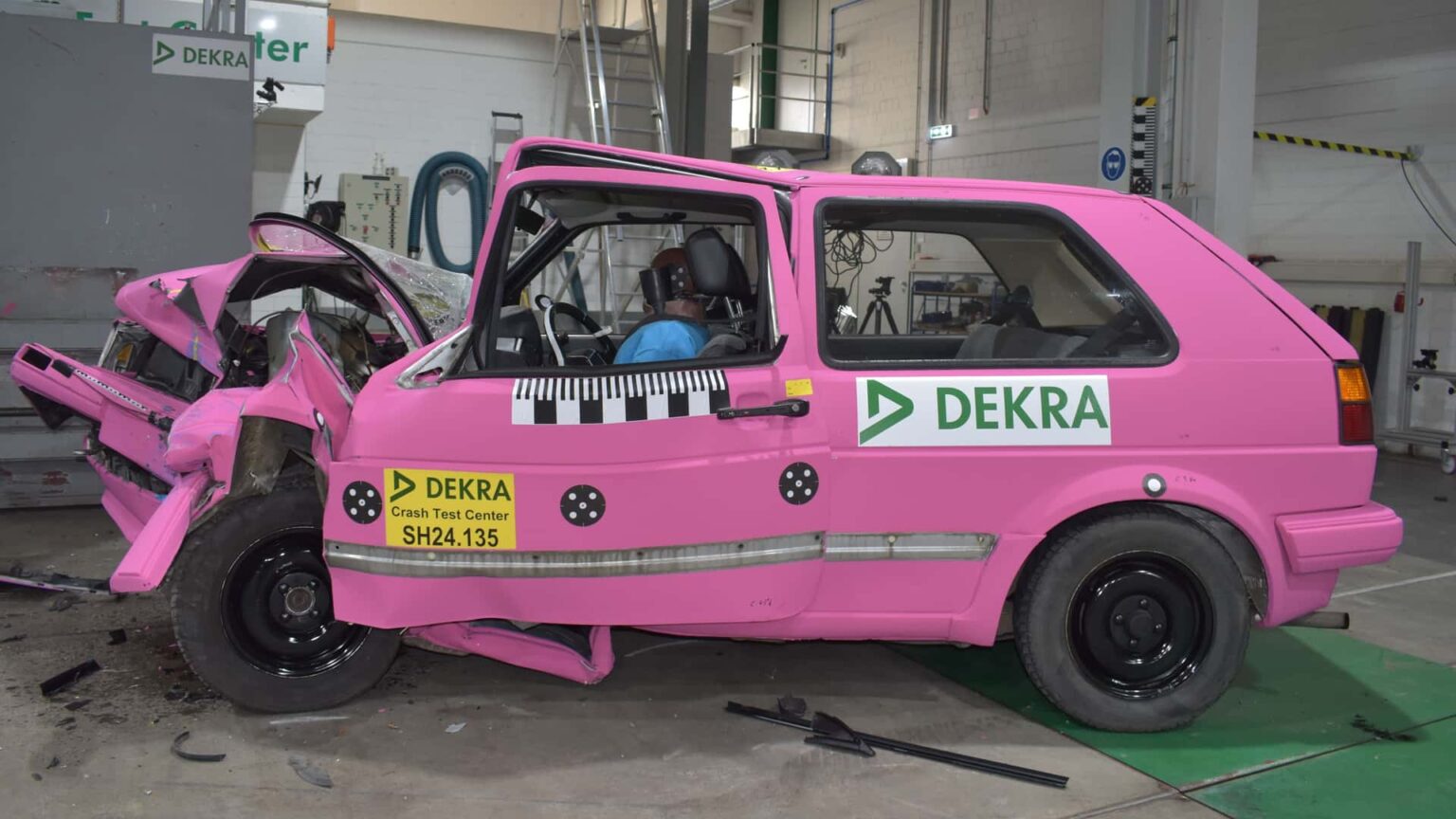Enthusiasts and journalists often complain about car bloat. Today’s vehicles are noticeably bigger and heavier than those from a few decades ago, with much of that added bulk dictated by safety regulations. Still, you’re far more likely to survive a head-on collision in a modern car than in an equivalent model built 20-30 years ago. This new crash test of an old Volkswagen serves as a stark reminder of how much car safety has advanced.
Dekra, an independent car safety organization founded in Berlin in 1925, put a second-generation Golf through the rigor of a modern crash test. The goal was to showcase how far safety has come by comparing the 1989 hatchback with its present-day successor, an eighth-gen example built in 2024. For this unusual test, the German testing, inspection, and certification body managed to secure a 36-year-old car in excellent technical condition.
Photo by: DEKRA
At its crash test center in Neumünster, Dekra launched the Golf II into a barrier at about 40 mph (60 km/h), simulating the frontal crash test procedure used by Euro NCAP until 2020. The barrier was equipped with a deformation element to mimic the energy absorption of an opposing vehicle. Under these conditions, the test reproduced a head-on collision between two identical cars traveling at 31-34 mph (50-55 km/h).
As if the scary aftermath images weren’t convincing enough, a Dekra expert summed up the results grimly: “In the Golf II, occupants would have had little chance of surviving this head-on collision due to the collapse of the passenger compartment, the deep penetration of vehicle components into the passenger compartment, the deceleration and the impact on the steering wheel.”
The outcome was very different for the Golf VIII tested under the exact same conditions. Had it been occupied, passengers likely would have walked away with only minor injuries: “The entire passenger compartment remained completely intact, and the occupants were very well protected by the front and side airbags in combination with the seat belts, belt tensioners, and belt force limiters.”

Photo by: DEKRA
Dekra didn’t stop at crashing a 1989 Golf in the name of safety. Braking tests revealed the eighth-gen car needed about 30 percent less distance to come to a full stop. Cornering stability was also examined in a maneuver test, with the modern VW safely completing it at 47 mph (75 km/h) compared to just 40 mph (65 km/h) for its predecessor.
The differences extended to visibility as well. The new car’s standard LED headlights proved to be “in a completely different league” than the halogen bulbs of its ancestor. At the rear, LED taillights improved visibility for following drivers, enhanced further by the third brake light absent on the 1989 model. It’s worth mentioning that the extra brake light wasn’t mandated in Europe until the late 1990s, though some cars had adopted it sooner.
While the simplicity of an old car certainly has its charm, there’s no denying that a Golf II looks more like a death trap compared to its modern counterpart.
Read the full article here



